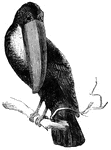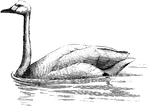
Bewick's Swan
"Cygnus bewicki, Buck's Swan, is white with black feet and bill, the basal half of the latter being…

Black Swan
The swan has been an object of admiration for its graceful neck, oval head, prominent beak, soft, and…
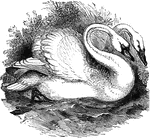
Mute Swan
The mute swan (Cygnus olor) is a large water bird in the family Anatidae which also includes geese and…

Mute Swan
"Cygynus. White Swans. Neck of extreme length. Trachea normally entering sternum. Bill tuberculate or…
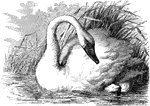
Whistling Swan
"Cygnus columbianus. Common American Swan. Whistling Swan. Bill with a yellow spot or blotch in front…
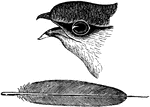
Chimney Swift Head and Feather
"Chaetura pelasgica. Chimney Swift. Chimney "Swallow". Sooty-brown, with a faint greenish gloss above;…

Common Swift Flying Through the Air by a Structure and a Tree with its Mouth Open
"The coloration of the twenty or more species of Cypselus is sooty-black or mouse-brown, frequently…

Northern Black Cloud Swift
"Nephaecetes niger borealis. Northern Black Cloud Swift. Entire plumage sooty-black, with slight greenish…
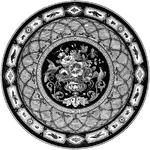
Table-Top
This table-top is made from the marble of Derbyshire, England. It also is made out of lapis lazuli a…
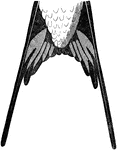
Barn Swallow Tail
"Hirundo horreorum. Barn Swallow. Tail deeply fornicate, nearly or about as long as the wings; lateral…

The Dentirostral Bill of a Tanager
"Fig 178 - the dentirostral bill of a Tanager (Pyranga hepatica)" Elliot Coues, 1884
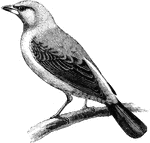
Brazilian Tanager
"Rhamphocoelus brasilius, the Brazilian Tanager, ...are chiefly small in size; the sexes are commonly…
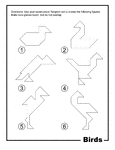
Birds Outline Tangram Card
Outlines of birds (duck, swan, turkey vulture, cormorant, and egret) made from tangram pieces. Tangrams,…
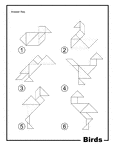
Birds Outline Solution Tangram Card
Solutions for outlines of birds (duck, swan, turkey vulture, cormorant, and egret) made from tangram…

Birds Silhouette Tangram Card
Silhouette outlines of birds (duck, swan, turkey vulture, cormorant, and egret) made from tangram pieces.…
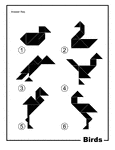
Birds Silhouette Solution Tangram Card
Solutions for silhouette outlines of birds (duck, swan, turkey vulture, cormorant, and egret) made from…
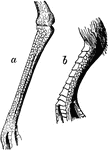
Reticulate Tarsus of a Plover
"Fig 38 a, Reticulate tarsus of a Plover. b, Scutellate and reticulate tarsus of a pigeon." Elliot Coues,…
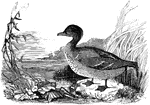
American Green-winged Teal
"Querquedula (N.) carolinensis. American Green-winged Teal. Bill black; feet bluish-gray: iris brown.…

Green-Winged Teal
This duck is beautifully colored and resembles a mallard. Its wings have an emerald green patch upon…
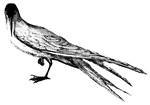
Tern
These birds are remarkable for their buoyant, graceful, easy flight, and the soft loose texture of their…

Sooty Tern Foot
"Sterna fuliginosa. Sooty Tern. feet stout; toes short; with much incised webs; tibia bare .70; tarsus…

Tail of Forster's Tern
"Sterna forsteri. Forster's Tern. Tail 5.00 - 8.00, forked 2.50-5.00." Elliot Coues, 1884
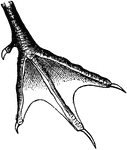
Incised Webbed Foot of a Tern
"...one or both webs may be so deeply incised, that is, cut away, that the palmation is practically…
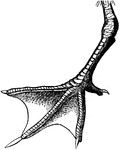
Webbed Foot of a Tern
"In the palmate or ordinary webbed foot, all the front toes are united by ample webs." Elliot Coues,…

Aleutian Tern
"Sterna aleutica. Aleutian Tern. Bill of ordinary shape, as in hirundo, macrura, etc., entirely black.…
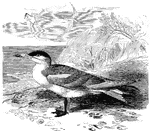
Caspian Tern
"Sterna (T.) caspia. Caspian Tern. Imperial Tern. Bill dark vermilion red, growing and somewhat "diaphanous"…

Common Tern
Sterna fluviatilis, the Common Tern, occupying the coasts and inland waters of Europe, temperate Asia,…
Elegant Tern
"Sterna (T.) elegans. Elegant Tern. Princely Tern. Bill bright red, salmon-colored toward tip. Feet…

Roseate Tern
"Sterna dougalli. Roseate Tern. Paradise Tern. Bill about as long as head or foot, straight, slender,…

Royal Tern
"Sterna (T.) maxima. Cayenne Tern. Royal Tern. Adult in summer: Pileum glossy greenish-black, not extending…

Sandwich Tern
"Sterna (T.) cantiaca. Sandwich Tern. Ducal Tern. Bill black, the tip 1/2 to 3/4 an inch bright yellow,…
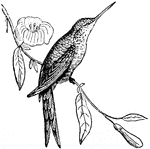
Columbian Thornbill
"They feed on honey extracted from flowers and the sap from the sugar-cane, the juice of which they…

Arizona Thrasher
"Bill shorter than head, comparatively stout at base, very acute at tip, the culmen quite convex, the…

Bow-Billed Thrasher
"Above, grayish-brown, nearly uniform; wing- coverts and quills with slight whitish edging, the edge…
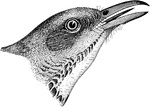
Brown Thrasher
"Upper parts uniform rust-red, with a bronzy lustre. Concealed portions of quills fuscous. Greater the…

California Thrasher
"No spots anywhere; wings and tail without decided barring or tipping. Bill as long as the head or longer,…

Crissal Thrasher
"Brownish-ash, with a faith olive shade, the wings and tail purer and darker fuscous, without white…
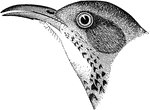
St. Lucas Thrasher
"Upper parts uniform ashy-brown; wings and tail similar, but rather purer and darker brown, the former…

Generic Details of a Thrush
"Generic details of a Myiadestes townsendi (Townsend's Flycatching Thrush); bill and foot nat. size,…
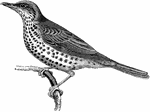
Mistletoe Thrush
"Turdus viscivorus, Mistletoe Thrush, the coloration is ordinarily plain black or brown, more or less…
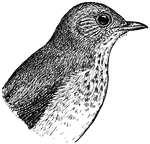
Wilson's Thrush
The Veery, Catharus fuscescens, is a small thrush species. It is occasionally called Willow Thrush or…

Wood Thrush
The Wood Thrush, Hylocichla mustelina, is a North American passerine bird. It is closely related to…

Wood Thrush
"Wood Thrush. Upper parts, including the surface of the closed wings, tawny-brown, purest and deepest…

Tinamou
"Tinamou is the name given to a genus and family of birds occurring in South America, and allied in…

The Skull of a Tinamou
"Dromaeognathous skull of a tinamou (Tinamus robustus); copies by Shufeldt from Huxley. Letters as before;…
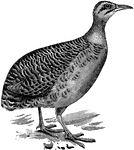
Red-winged Tinamou
"Rhynchotus rufescens,... is grey-brown, with blacker crown, rufous cheeks, neck, and breast, and chestnut…

Tit Bird
The tits, chickadees, and titmice comprise Paridae, a large family of small passerine birds which occur…
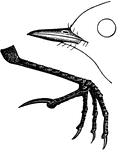
American Titlark Claw
"Anthus Ludovicianus. Louisiana Pipit. American Titlark. Brown Lark. Wagtail. Bill blackish, pale at…
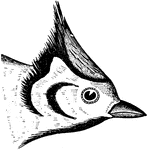
Bridled Titmouse
"Upper parts olivaceous-ash, wings and tail darker, edged with the color of the back, or even a brighter…
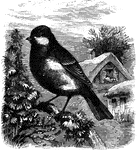
European Greater Titmouse
"Head not crested. Wings and tail rounded, of approximately equal lengths, and about as long as the…

Great Titmouse
"Parus major, the Great Titmouse, are olive, brown, or grey, varied with black, white, chestnut, or…
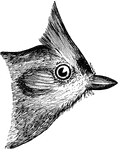
Tufted Titmouse
"Entire upper parts ashy, the back usually with a slight olivaceous shade, the wings and tail rather…
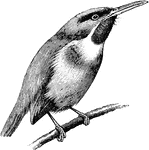
Tody
"Todus viridis, Tody, has coloration that is green, with a red throat, yellowish-white or pinkish under…

Huron Totem
The totem or emblem of the Huron, a Native American tribe has a beaver on top of a log in the water.

Toucan
In eating, they seize the fruit with the extremity of the beak, make it bounce up in the air, receive…
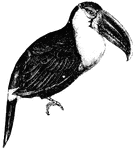
Toucan
In eating, they seize the fruit with the extremity of the beak, make it bounce up in the air, receive…



